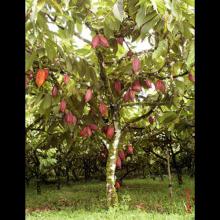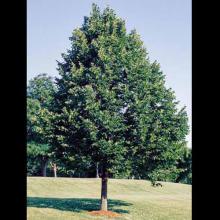Theobroma cacao
Common name:
Cacao tree
Genus:
Theobroma
Family:
Malvaceae
Order:
Malvales
Tilia americana
Common name:
American basswood
Genus:
Tilia
Family:
Malvaceae
Order:
Malvales
Theobroma cacao
Common name:
Cacao tree
Genus:
Theobroma
Family:
Malvaceae
Order:
Malvales
Tilia americana
Common name:
American basswood
Genus:
Tilia
Family:
Malvaceae
Order:
Malvales
Theobroma cacao
Common name:
Cacao tree
Genus:
Theobroma
Family:
Malvaceae
Order:
Malvales
Tilia americana
Common name:
American basswood
Genus:
Tilia
Family:
Malvaceae
Order:
Malvales
Family (Plantae): Malvaceae
Malvaceae, or the mallows, is a family of flowering plants estimated to contain 244 genera with 4225 known species. Well-known members of economic importance include okra, cotton, cacao and durian. There are also some genera containing familiar ornamentals, such as Alcea (hollyhock), Malva (mallow) and Lavatera (tree mallow), as well as Tilia (lime or linden tree). The largest genera in terms of number of species include Hibiscus (300 species), Sterculia (250 species), Dombeya (250 species), Pavonia (200 species) and Sida (200 species).
Description
Most species are herbs or shrubs, but some are trees and lianas.
Leaves and Stems
Leaves are generally alternate, often palmately lobed or compound and palmately veined. The margin may be entire, but when dentate, a vein ends at the tip of each tooth (malvoid teeth). Stipules are present. The stems contain mucous canals and often also mucous cavities. Hairs are common, and are most typically stellate. Stems of Bombacoideae are often covered in thick prickles.
Flowers
The flowers are commonly borne in definite or indefinite axillary inflorescences, which are often reduced to a single flower, but may also be cauliflorous, oppositifolious, or terminal. They often bear supernumerary bracts in the structure of a bicolor unit. They can be unisexual or bisexual, and are generally actinomorphic, often associated with conspicuous bracts, forming an epicalyx. They generally have five valvate sepals, most frequently basally connate, with five imbricate petals. The stamens are five to numerous, and connate at least at their bases, but often forming a tube around the pistils. The pistils are composed of two to many connate carpels. The ovary is superior, with axial placentation, with capitate or lobed stigma. The flowers have nectaries made of many tightly packed glandular hairs, usually positioned on the sepals.
Fruits
The fruits are most often loculicidal capsules, schizocarps or nuts.
Pollination
Self-pollination is often avoided by means of protandry. Most species are entomophilous (pollinated by insects). Bees from the tribe Emphorini of the Apidae (including Ptilothrix, Diadasia, and Melitoma) are known to specialize on the plants.
Importance
A number of species are pests in agriculture, including Abutilon theophrasti and Modiola caroliniana, and others that are garden escapes. Cotton (four species of Gossypium), kenaf (Hibiscus cannabinus), cacao (Theobroma cacao), kola nut (Cola spp.), and okra (Abelmoschus esculentus) are important agricultural crops. The fruit and leaves of baobabs are edible, as is the fruit of the durian. A number of species, including Hibiscus syriacus, Hibiscus rosa-sinensis and Alcea rosea are garden plants.
Reference: Wikipedia


